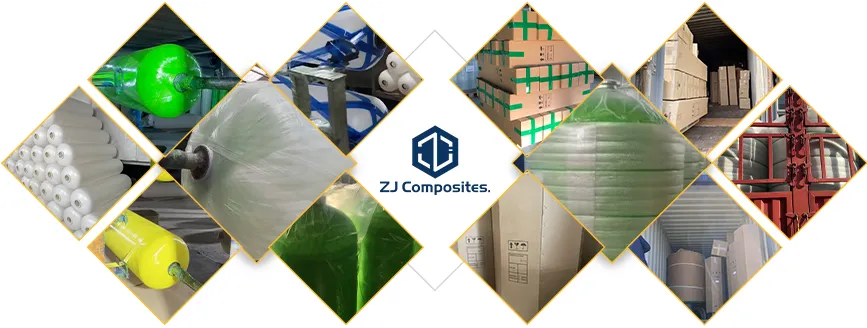loading...
- No. 9, Xingyuan South Street, Dongwaihuan Road, Zaoqiang County, Hengshui, Hebei, China
- admin@zjcomposites.com
- +86 15097380338
- Welcome to visit our website!
Innovative Composite Deck Panels for Enhanced Performance in FRP Bridge Construction
The Benefits of FRP Bridge Deck Panels
Fiber Reinforced Polymer (FRP) bridge deck panels are an innovative solution that has gained significant traction in the field of civil engineering. Designed to enhance the structural integrity, longevity, and overall performance of bridge systems, these panels present numerous advantages over traditional materials like concrete and steel. This article will delve into the benefits of using FRP materials in bridge construction, focusing on their strength, lightweight properties, durability, low maintenance, and sustainability.
Strength and Structural Integrity
One of the foremost advantages of FRP bridge deck panels is their remarkable strength-to-weight ratio. Made from a composite of fibers and polymers, FRP panels can support significant loads while being much lighter than conventional materials. This lightweight characteristic allows for easier handling and installation, reducing labor costs and construction time. Furthermore, the high tensile strength of FRP exceeds that of traditional materials, providing structural integrity that ensures safety and reliability for vehicular and pedestrian traffic.
Durability and Weather Resistance
FRP materials are inherently resistant to a range of environmental factors, including moisture, corrosion, and UV exposure. Unlike steel, which can corrode when exposed to water and salt, or concrete that can crack under freeze-thaw cycles, FRP panels maintain their integrity and performance over time. This resistance to harsh weather conditions is particularly beneficial for bridges in coastal areas or regions with extreme climates, ensuring a longer lifespan and less frequent repairs or replacements.
The Benefits of FRP Bridge Deck Panels
Another compelling reason to choose FRP bridge deck panels is their low maintenance requirements. Traditional materials often necessitate regular inspections and repairs to address issues like rust or cracking. In contrast, FRP panels do not corrode and are less prone to damage caused by environmental stresses, significantly reducing the associated maintenance costs. This characteristic is particularly advantageous for municipalities and transportation agencies tasked with maintaining safe infrastructure while operating within tight budgets.
frp bridge deck panels

Sustainability and Environmental Impact
In an era where sustainability is becoming increasingly critical, the use of FRP materials in bridge construction offers a compelling alternative to traditional choices. The manufacturing process of FRP can be more energy-efficient compared to producing concrete or steel. Additionally, because FRP panels are lightweight, they necessitate less energy for transportation and installation. Importantly, FRP is often recyclable, contributing to a reduction in waste when bridges reach the end of their operational life.
Aesthetic Versatility
Beyond their structural and functional benefits, FRP bridge deck panels also provide aesthetic versatility. Available in various colors and textures, these panels can be designed to complement the surrounding environment or adhere to specific design visions. This aesthetic flexibility is particularly beneficial in public infrastructure projects where visual appeal is a consideration.
Real-World Applications
Several successful implementations of FRP bridge deck panels can be found across the globe. In the United States, agencies have experimented with and adopted FRP composites for bridge refurbishment and replacement projects. These projects often showcase the efficacy and benefits of FRP materials, providing case studies for future applications.
Conclusion
The adoption of FRP bridge deck panels represents a forward-thinking approach to bridge construction and maintenance. With their superior strength, lightweight properties, durability, low maintenance needs, and sustainability aspects, these panels offer a comprehensive solution to some of the persistent challenges faced by civil engineers and transportation authorities. As technology continues to evolve, the use of FRP in infrastructure projects is likely to expand, reaffirming its place as a cornerstone of modern engineering practices. The future of bridge construction is indeed bright with the integration of advanced materials like FRP.
-
The Rise of FRP Profiles: Strong, Lightweight, and Built to LastNewsJul.14,2025
-
SMC Panel Tanks: A Modern Water Storage Solution for All EnvironmentsNewsJul.14,2025
-
GRP Grating: A Modern Solution for Safe and Durable Access SystemsNewsJul.14,2025
-
Galvanized Steel Water Tanks: Durable, Reliable, and Ready for UseNewsJul.14,2025
-
FRP Mini Mesh Grating: The Safer, Smarter Flooring SolutionNewsJul.14,2025
-
Exploring FRP Vessels: Durable Solutions for Modern Fluid HandlingNewsJul.14,2025
-
GRP Structures: The Future of Lightweight, High-Performance EngineeringNewsJun.20,2025
